From rally stages to racetracks, autobahns to collectors’ garages, Germany has built some of the most iconic performance cars ever made. These ten machines prove that when it comes to precision, passion, and a bit of madness, nobody does it quite like the Germans.

AI Quick Summary
Germany has established a formidable legacy for building iconic performance cars, celebrated for their unique blend of precision engineering, advanced technology, and pure passion. This article highlights ten such legendary machines, ranging from rally monsters like the Audi Sport Quattro S1 and track dominators like the BMW M3, to high-tech supercars such as the Porsche 959 and raw powerhouses like the Carrera GT. These vehicles consistently demonstrate blistering speed, innovative design, and significant motorsport heritage, proving Germany’s unparalleled ability to create technically brilliant and emotionally engaging automobiles.
This summary was generated by AI using this article’s content.
Read Next
1. Audi Sport Quattro S1
The S1 wasn’t just fast; it was frightening. Born in the fire of Group B rallying, it combined brute power with all-wheel-drive magic that changed motorsport forever. Under its short, box-arched body sat a 2.1-litre turbocharged five-cylinder engine producing up to 540 bhp, launching it from 0–100 km/h in around three seconds. That was supercar pace in 1985.

Its Kevlar body kept the weight to just 1,090 kg, while the quattro system made it unstoppable on loose surfaces. It wasn’t graceful; it was violent, loud, and barely controllable. The S1 conquered Pikes Peak, smashing records with Walter Röhrl behind the wheel, and became a rally legend before Group B was banned for being too dangerous. Only around 40 exist today, each worth a small fortune and a big dose of respect.
2. Mercedes-Benz 190E Evo II
The 190E Evo II looked like it was designed by a mad scientist, and it sort of was. Its rear wing and boxy arches were shaped in a wind tunnel at the University of Stuttgart, producing real downforce long before it became trendy. Underneath the bodywork sat a 2.5-litre four-cylinder engine tuned by Cosworth, delivering 232 hp at a screaming 7,600 rpm.
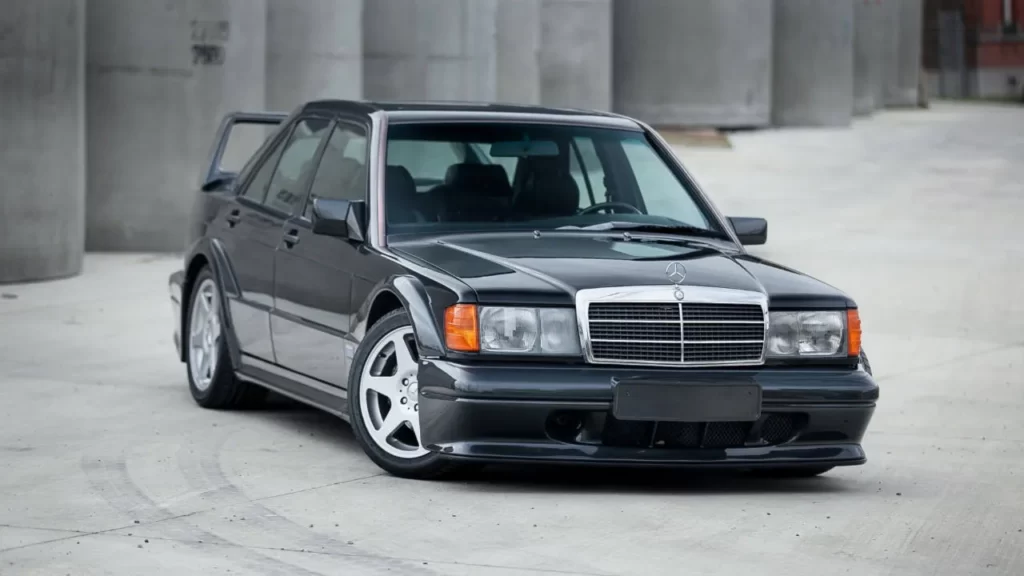
Built in 1990 to homologate Mercedes’ DTM racer, only 502 were made. On the track, it battled the BMW M3 in one of the fiercest rivalries of the era. The DTM versions made over 360 hp and were driven by legends like Bernd Schneider, who took multiple victories with them. Today, the Evo II is one of the most sought-after Mercedes models ever, a perfect mix of science, sound, and street presence.
3. BMW M3 (E30)
The original M3 remains the yardstick for driver engagement. It was light, simple, and scalpel-sharp. Built as a homologation special for DTM racing, it featured a high-revving 2.3-litre four-cylinder engine (the S14) pushing out 200 hp. What mattered wasn’t raw power, but precision. The steering talked, the chassis danced, and every gearshift felt mechanical and alive.
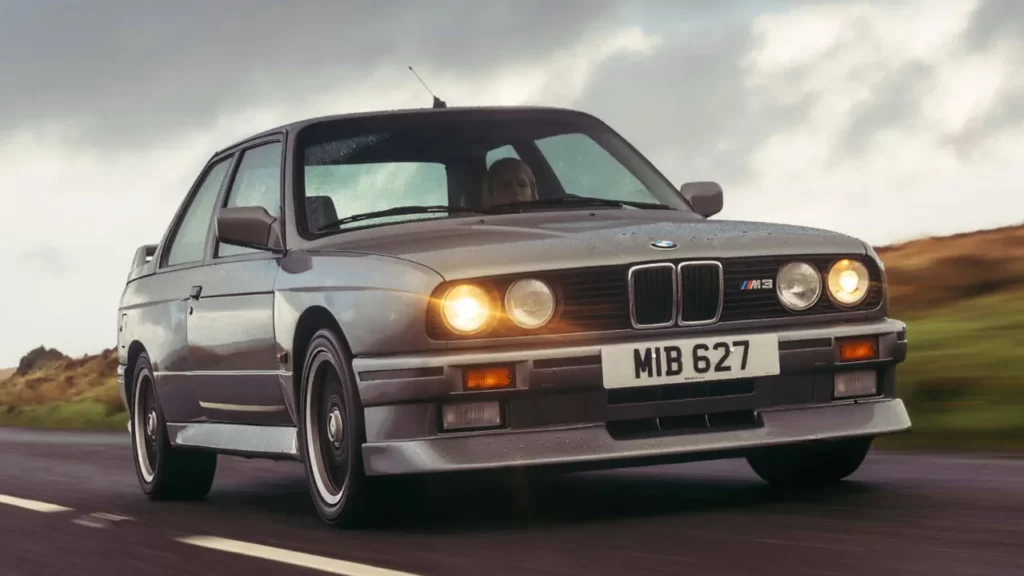
Race versions dominated touring car championships worldwide, including five straight DTM titles and multiple Nürburgring 24-hour wins. Later Evo models grew to 2.5 litres, hitting nearly 380 hp in full race trim. Around 17,000 were made, but pristine examples now fetch collector money. This car didn’t just start BMW’s M legend; it defined it.
4. Porsche 959
In the 1980s, the Porsche 959 was science fiction on wheels. With twin turbos, an electronically controlled all-wheel-drive system, and a 2.85-litre flat-six derived from Porsche’s Le Mans racers, it produced 450 hp and could hit nearly 320 km/h. It was the fastest road car in the world when launched.
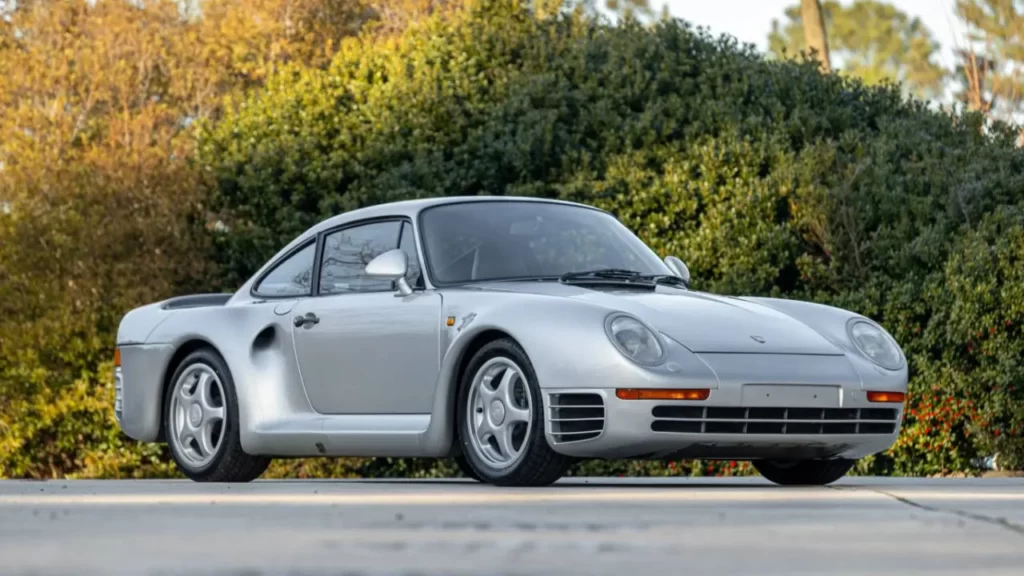
The 959 used lightweight Kevlar, aluminium, and magnesium parts, as well as adjustable ride height, unheard of for its time. It also introduced a tyre pressure monitoring system and an early version of torque-vectoring. Porsche built only 292 units, each hand-assembled and tested like a race car. It even won the gruelling Paris-Dakar Rally, proving that German engineering can survive anything, even sandstorms.
5. Mercedes-Benz SLS AMG
The modern revival of the Gullwing wasn’t just nostalgic, it was a full-blooded supercar. Under its long bonnet roared AMG’s hand-built 6.2-litre V8, producing 563 hp and one of the best exhaust notes ever recorded. It sprinted from 0–100 km/h in 3.8 seconds and hit 317 km/h flat out.
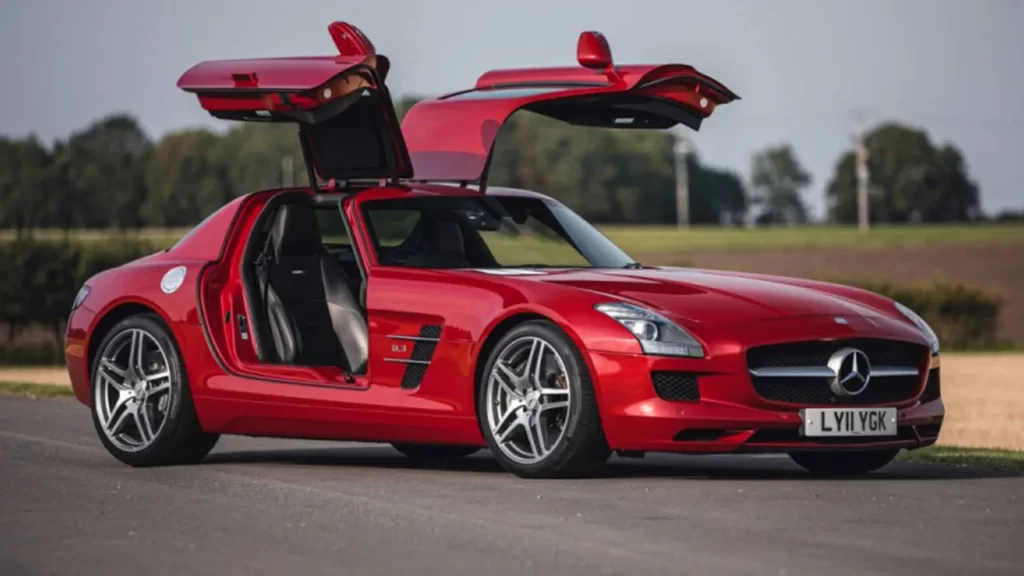
The aluminium spaceframe kept it relatively light for its size, and the balance between brute power and precise handling made it a joy to drive. The Black Series version turned the volume up to 631 hp, while the rare Electric Drive variant hinted at AMG’s future. Those iconic gullwing doors weren’t just design nostalgia; they were an homage to the 300 SL, tying the modern era to Mercedes’ golden past.
6. BMW M1
Before M badges were everywhere, BMW built the M1, its first and only true supercar. Styled by Giorgetto Giugiaro and powered by a mid-mounted 3.5-litre straight-six making 277 hp, it was the car that proved BMW could take on Ferrari and Lamborghini. The M1 could reach 260 km/h and hit 100 km/h in 5.5 seconds, mighty numbers for 1978.
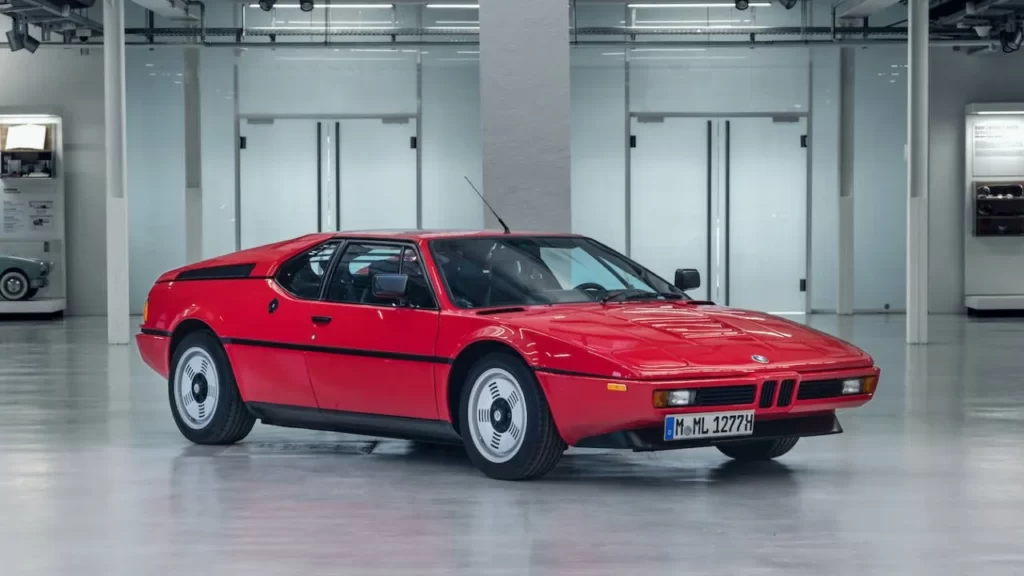
The M1’s chassis and suspension made it one of the most balanced cars of its time. Its racing version starred in the BMW Procar Championship, where Formula 1 legends like Niki Lauda and Nelson Piquet raced identical M1s before Grand Prix weekends. Only 460 cars were ever built, making it one of the most collectable BMWs on earth.
7. Audi R8 V10
When Audi launched the R8, it shocked the supercar world. Here was a mid-engined machine that could rival Ferrari yet be driven daily without drama. It’s a 5.2-litre naturally aspirated V10, borrowed from Lamborghini, revved to 8,700 rpm and sounded glorious. Depending on the version, it made between 525 and 620 hp, rocketing to 100 km/h in around 3.2 seconds.
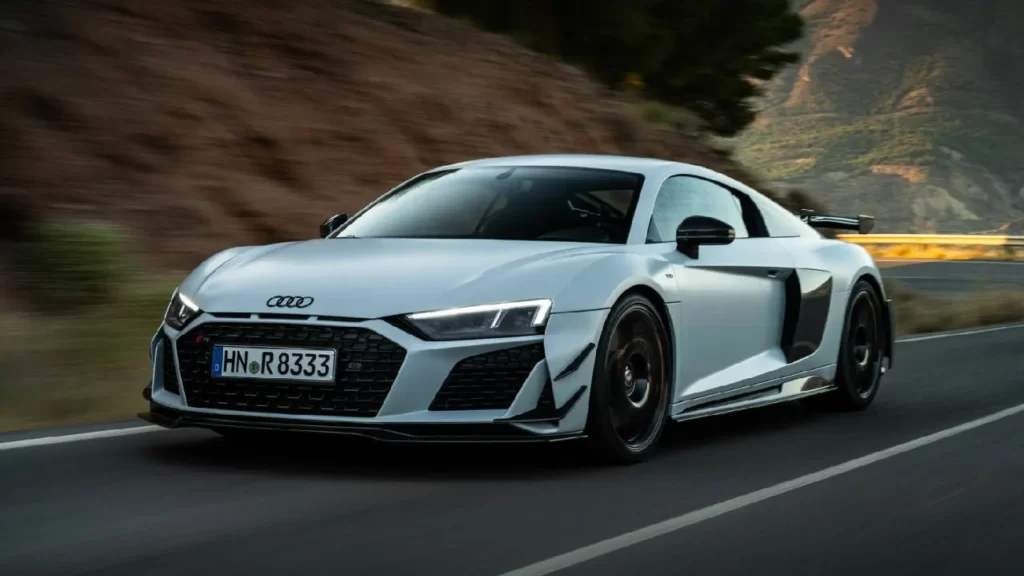
It featured Audi’s aluminium spaceframe, quattro all-wheel drive, and a cabin that didn’t rattle or fry your legs. You could have it with a manual gearbox, making it one of the last truly analogue supercars of the 2000s. The R8 proved that a car could be exotic, practical, and devastatingly quick all at once.
8. Porsche Carrera GT
Few cars are spoken of with such reverence. The Carrera GT is raw, dangerous, and utterly intoxicating. Its 5.7-litre V10 started life as a Formula 1 engine project and produced 612 hp. It screamed to 8,000 rpm, paired with a manual gearbox that demanded real skill. 0–100 km/h came in under four seconds, and top speed was 334 km/h.
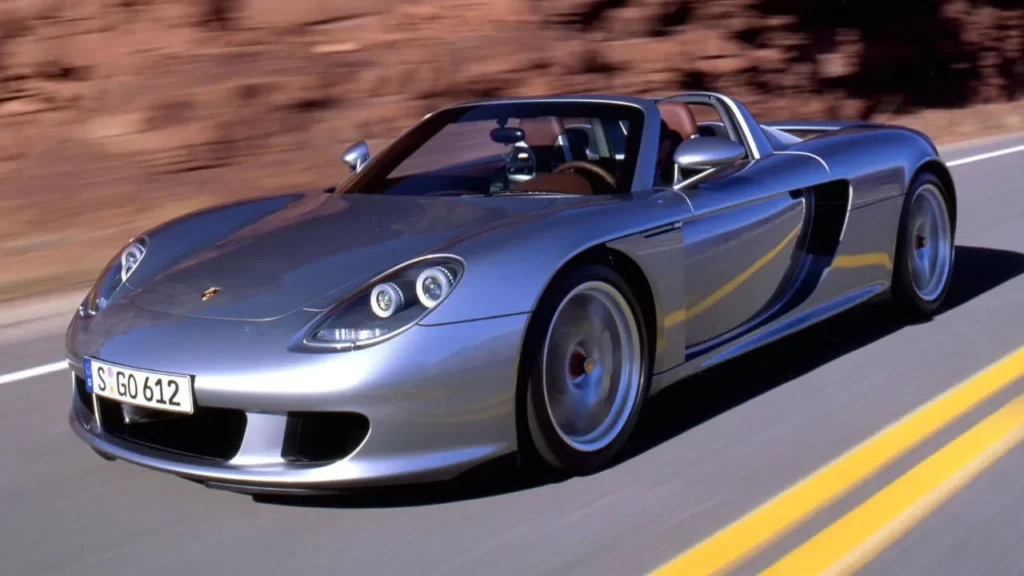
Everything about it was extreme: the clutch was razor-thin, the power delivery immediate, and the noise spine-tingling. Built between 2003 and 2007, only 1,270 were made, each one a work of carbon-fibre perfection. It was the last great supercar before electronics took over. One mistake, and it would bite. And that’s exactly why enthusiasts love it.
9. Mercedes-Benz 300 SL Gullwing
The 300 SL wasn’t just fast for its time; it was revolutionary. With its tubular steel spaceframe, direct fuel injection, and upward-opening doors, it looked and performed like something from another world in 1954. Its 3.0-litre straight-six made 240 hp, giving it a 260 km/h top speed, the fastest production car of its era.
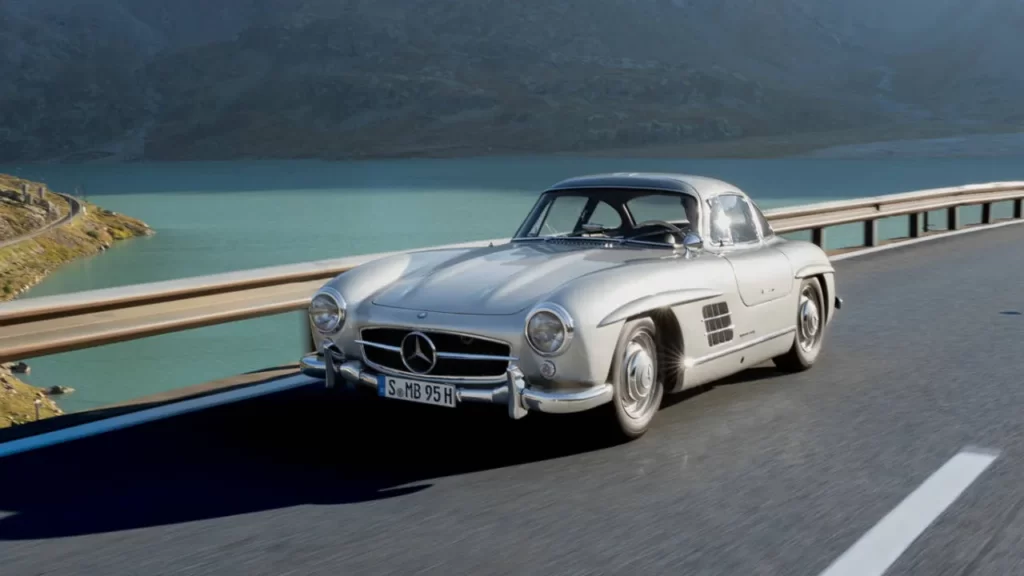
Every part of the 300 SL was built for lightness and strength. Its unique chassis made normal doors impossible, leading to the creation of the iconic gullwings. It won races, impressed the rich, and became the definition of elegance. Today, pristine examples command upwards of $3 million, proof that beauty and brains can share the same bonnet.
10. Porsche 911
The Porsche 911 is the ultimate example of evolution done right. Introduced in 1963, it has outlived trends, rivals, and entire companies. What began as a 2.0-litre flat-six sports car has grown into a family of performance icons. Modern versions like the 911 Turbo S hit 330 km/h and lap tracks faster than race cars, yet still commute in comfort.
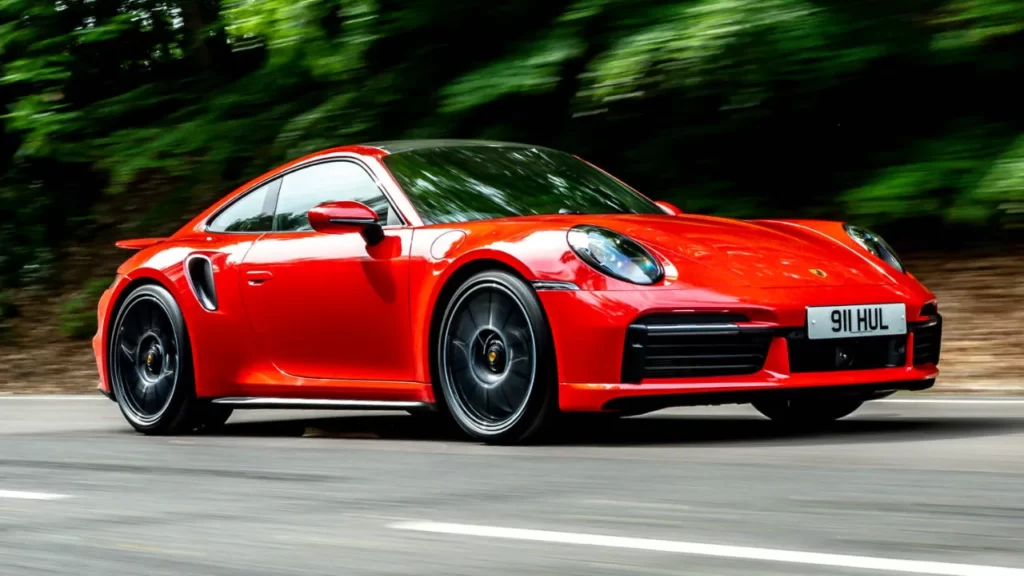
The 911’s magic lies in its rear-engine layout and unbreakable DNA. Each generation refines the same recipe: perfect balance, pinpoint steering, and everyday usability. From the air-cooled classics to today’s hybrid-ready 992 models, it remains the car every other sports car measures itself against. Quite simply, it’s the heart and soul of German performance.
From the brutal Audi S1 to the timeless 911, these ten cars capture the essence of German engineering, smart, fearless, and a little obsessive. They weren’t built just to go fast. They were built to be remembered.
Find the best used cars for sale in the UAE.
Stay tuned to UAE’s most popular auto blog for more information about the latest happenings in all of the Emirates.
FAQs
Which is the fastest German sports car ever made?
That crown goes to the Porsche 911 GT2 RS, clocking around 340 km/h. It’s brutally fast and completely unbothered about comfort.
What makes German sports cars so special?
They blend precision, reliability, and passion. Every nut and bolt feels engineered for a purpose, not just for flair.
Which is the rarest German sports car on this list?
The Audi Sport Quattro S1. Fewer than 40 were ever built, making it rarer than most hypercars today.
Which German sports car is the most collectable?
The Mercedes-Benz 300 SL Gullwing. A pristine example can fetch over $3 million, and it still looks as stunning as the day it debuted.
Which modern German sports car gives the best driving feel?
The Porsche 911. Every generation refines the formula but keeps that perfect balance between madness and precision that defines German engineering.
From rally stages to racetracks, autobahns to collectors’ garages, Germany has built some of the most iconic performance cars ever made. These ten machines prove that when it comes to precision, passion, and a bit of madness, nobody does it





